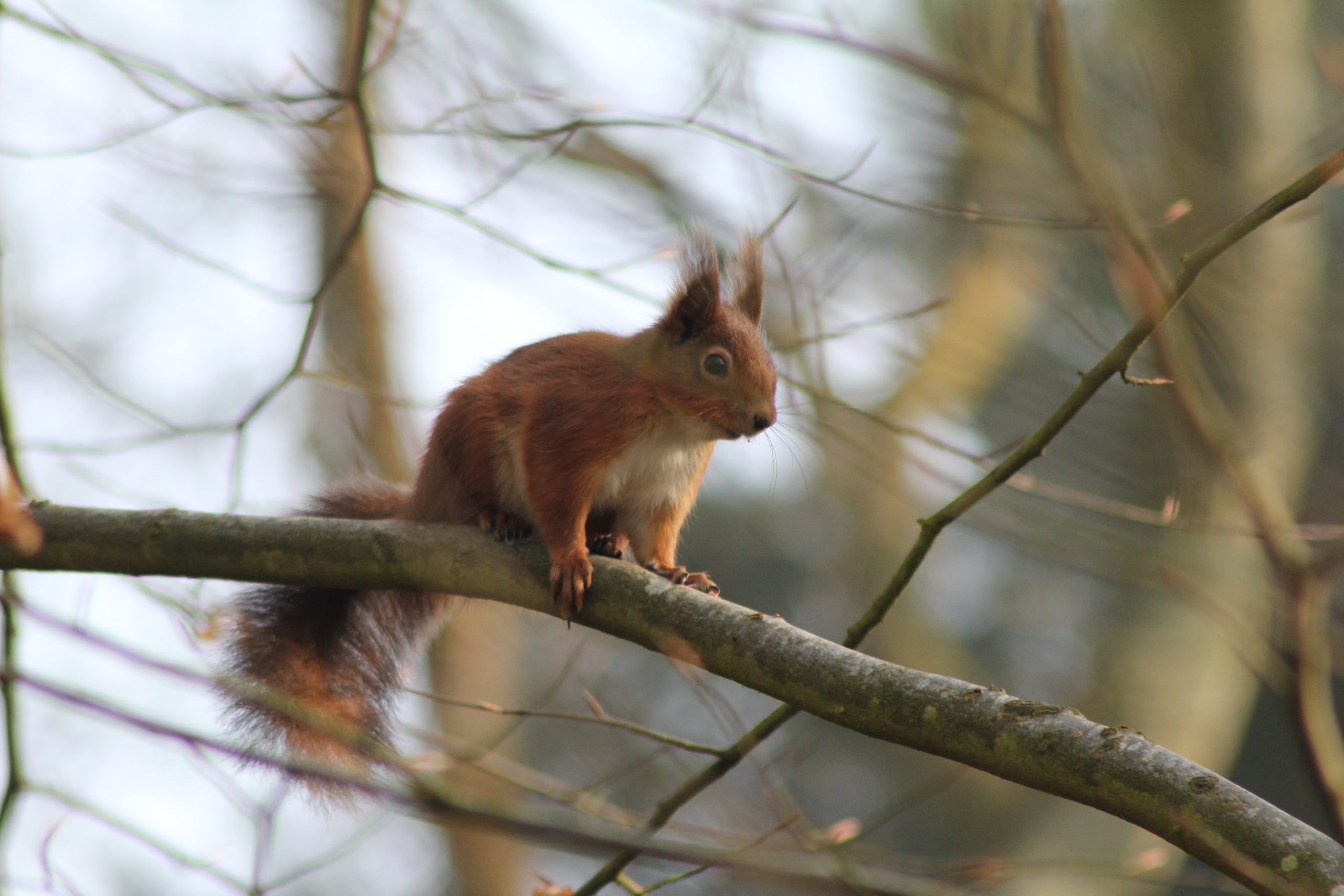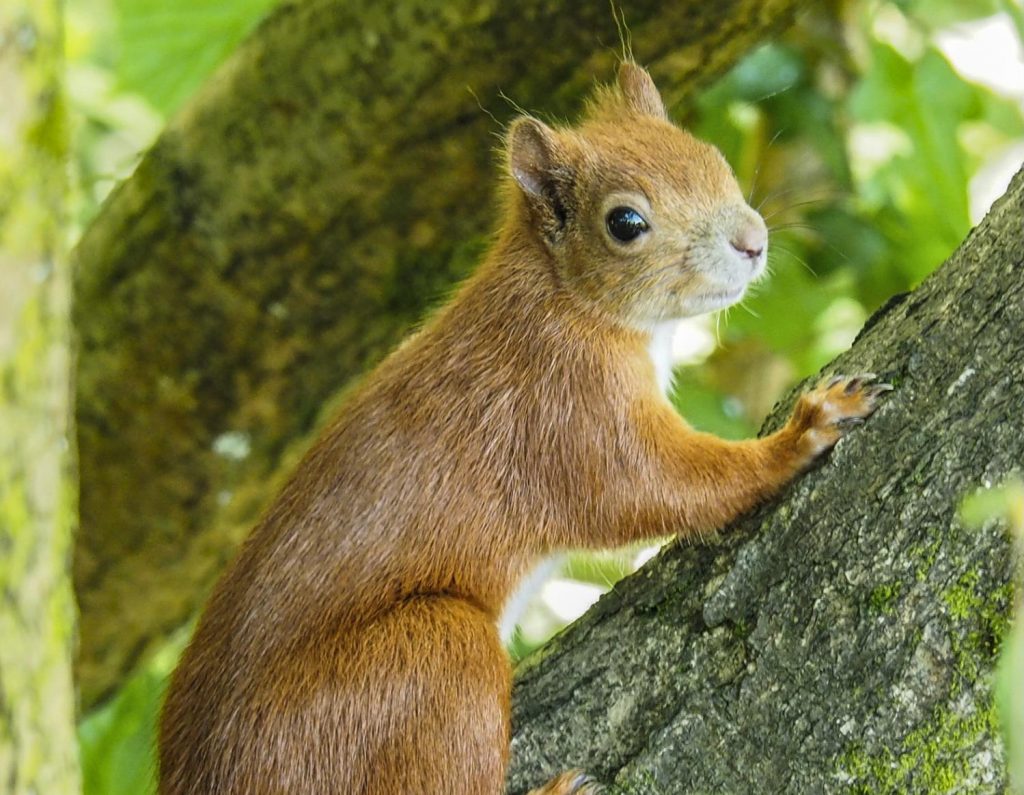
Red squirrels on the Isle of Wight
With distinctive russet fur, tufted ears, and twitching tail, a native red squirrel is a captivating sight. The Isle of Wight is extremely lucky to have a thriving population of red squirrels.
Historically red squirrels colonised the whole of the British Isles. But, in 1876, grey squirrels were introduced into Henbury Park, Cheshire, which was then followed by 30 other releases in the country, resulting in red squirrels being all but wiped out in mainland Britain due to the squirrel pox virus that greys carry.
Grey squirrels are immune to this but sadly reds have no immunity and quickly succumb to the virus. The Isle of Wight is lucky to be surrounded by the Solent as it acts as a direct barrier to stop grey squirrels from colonising the Island and protects our red squirrels from the squirrel pox virus.

The red squirrel population
However, the Island’s red squirrel population has also had its challenges. Landscape changes have resulted in woodlands, trees, and hedgerows being lost which in turn has reduced the suitable habitat for red squirrels. Fragmentation of these core habitats leaves squirrels exposed and vulnerable.
Many squirrels are lost to vehicle strikes as they cross roads and squirrels crossing open ground are at risk of predation. Crucial wildlife corridors linking woodlands are now more important than ever before to ensure that red squirrel populations can continue to thrive and expand.
Where to find them
One of the best sites for red squirrels on the Island is the Alverstone Mead Nature Reserve complex. This group of reserves, managed by the Hampshire & Isle of Wight Wildlife Trust, is home to a thriving red squirrel population where you can see them leap from tree to tree from a dedicated squirrel hide.
However, please refrain from feeding the squirrels as they are wild animals and should be treated as such. They have an abundance of natural food within this reserve, so they definitely won’t go hungry!

This nature reserve is also fantastic for seeing a wide range of woodland birds. Watch from the hide as great tits, blue tits, and robins flit between the trees, visiting bird feeders enjoying the peace and tranquillity of the woodland habitats.
Located on the Eastern Yar river, this reserve is also home to ducks, moorhens, coots, and other waders and wildfowl. Keep your eyes peeled on your visit to Alverstone Mead, you may be lucky enough to see a red squirrel, the blue flash of a kingfisher, or even a water vole!
